Electrical Engineering: Circuit Analysis and Vector Algebra Homework
VerifiedAdded on 2023/06/04
|9
|780
|350
Homework Assignment
AI Summary
This document presents a comprehensive solution to an electrical engineering assignment. The solution encompasses several key areas of electrical engineering, including the analysis of sinusoidal waveforms, determination of amplitude, phase angle, and periodic time. It further explores circuit analysis by evaluating voltage at different time instances and calculating the time at which specific voltage levels are reached. The assignment also delves into vector algebra, using vector cross products to calculate torque and analyzing the sum of vectors. The solution includes graphical representations and detailed calculations to illustrate the concepts thoroughly. The student utilized formulas, trigonometric functions, and vector operations to solve the problems. References to relevant engineering mathematics resources are also provided.
1 out of 9
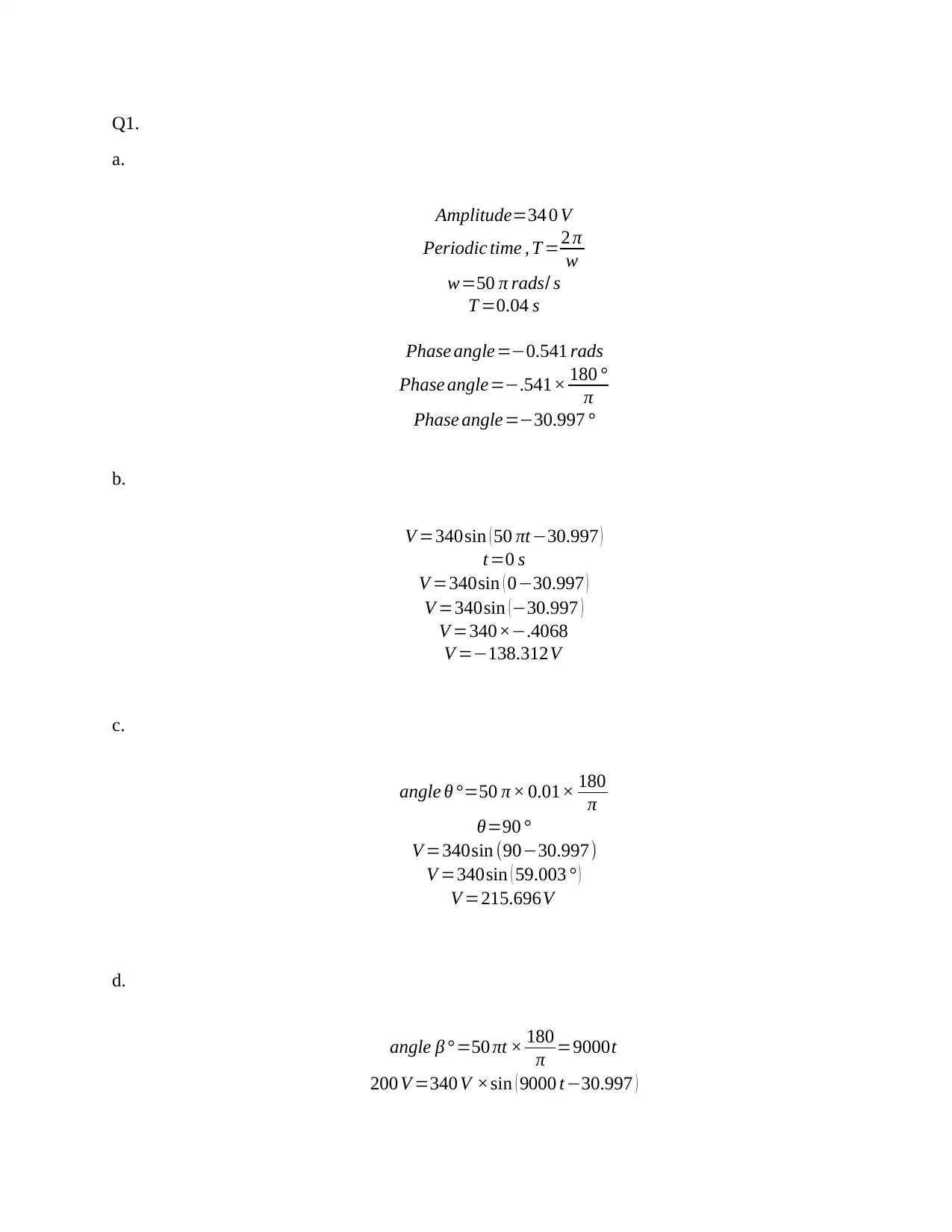
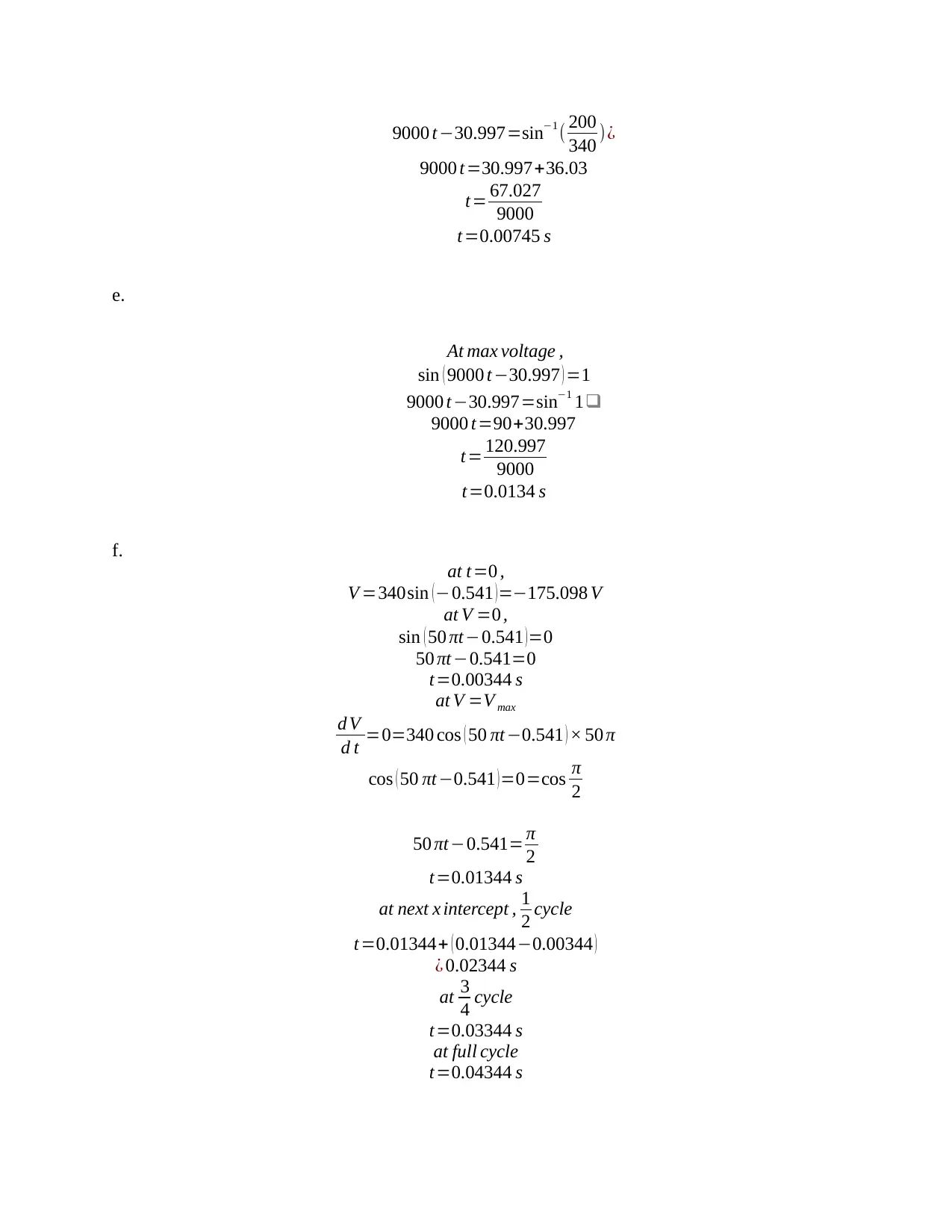
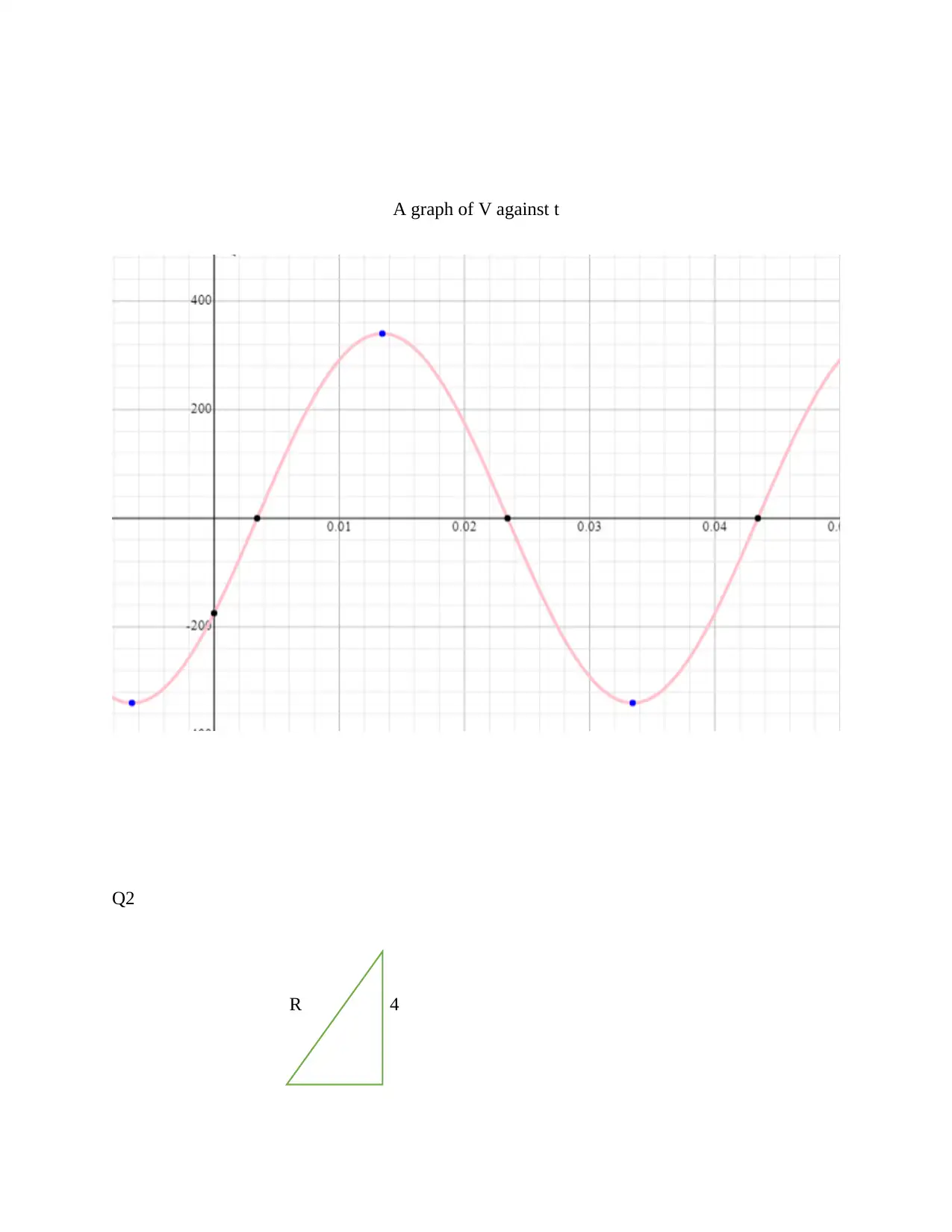

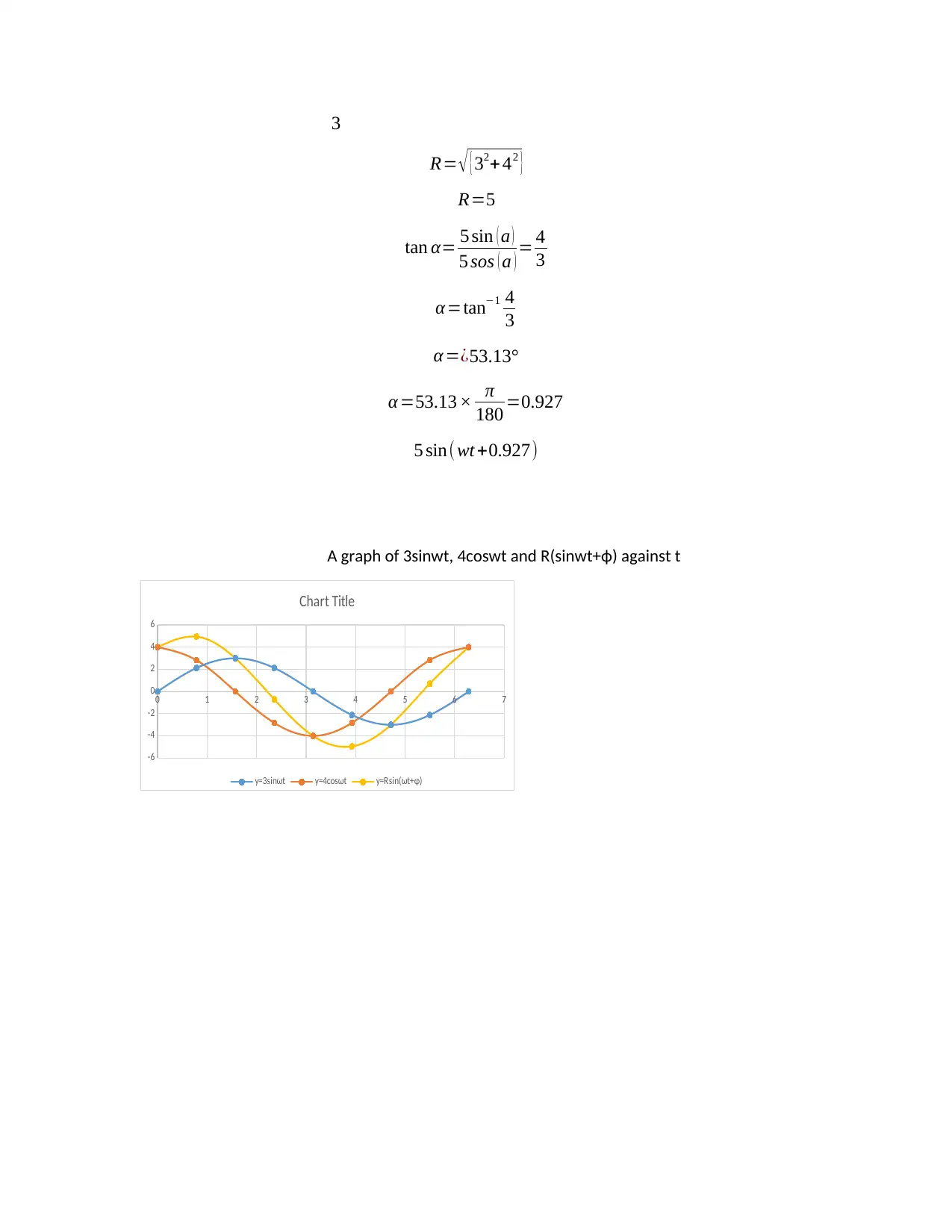
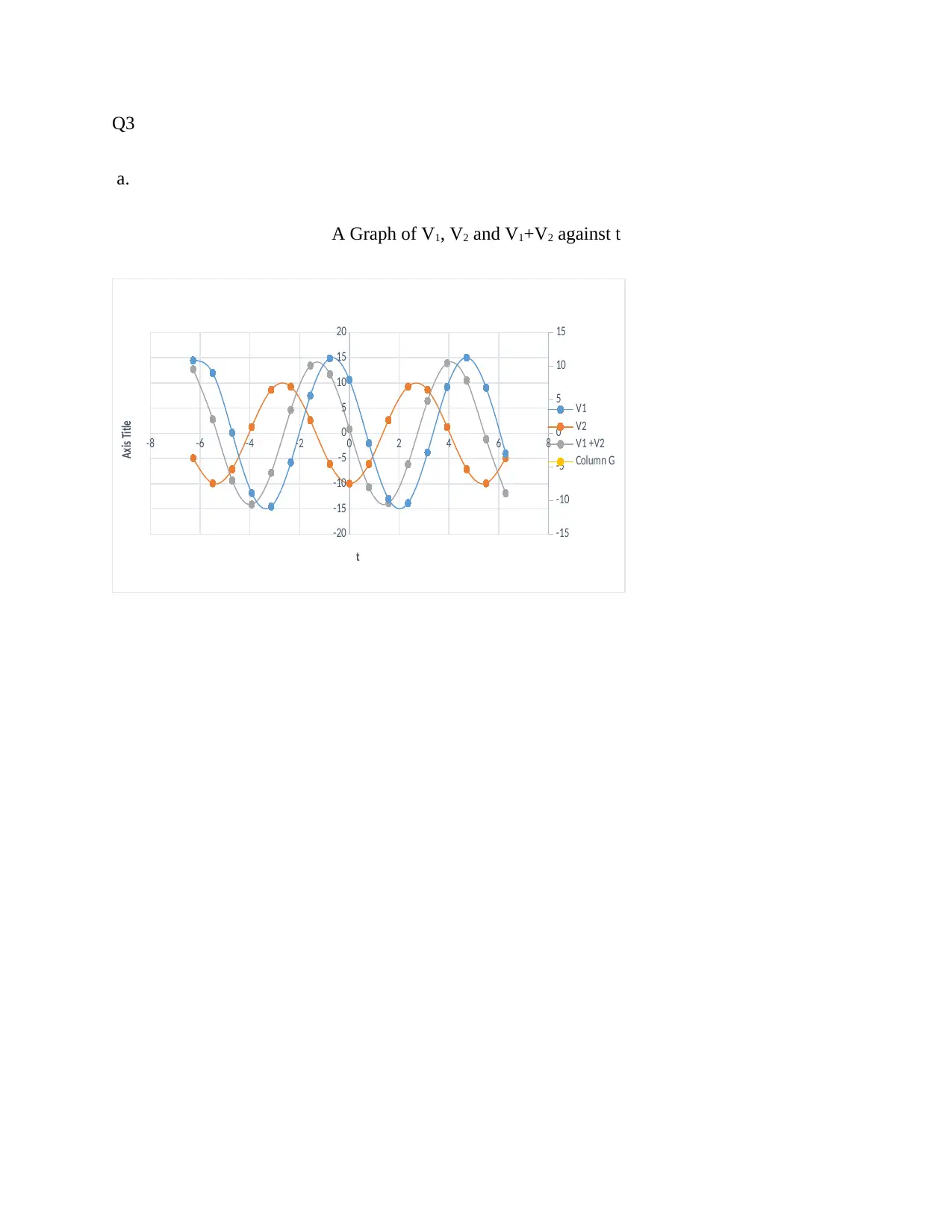

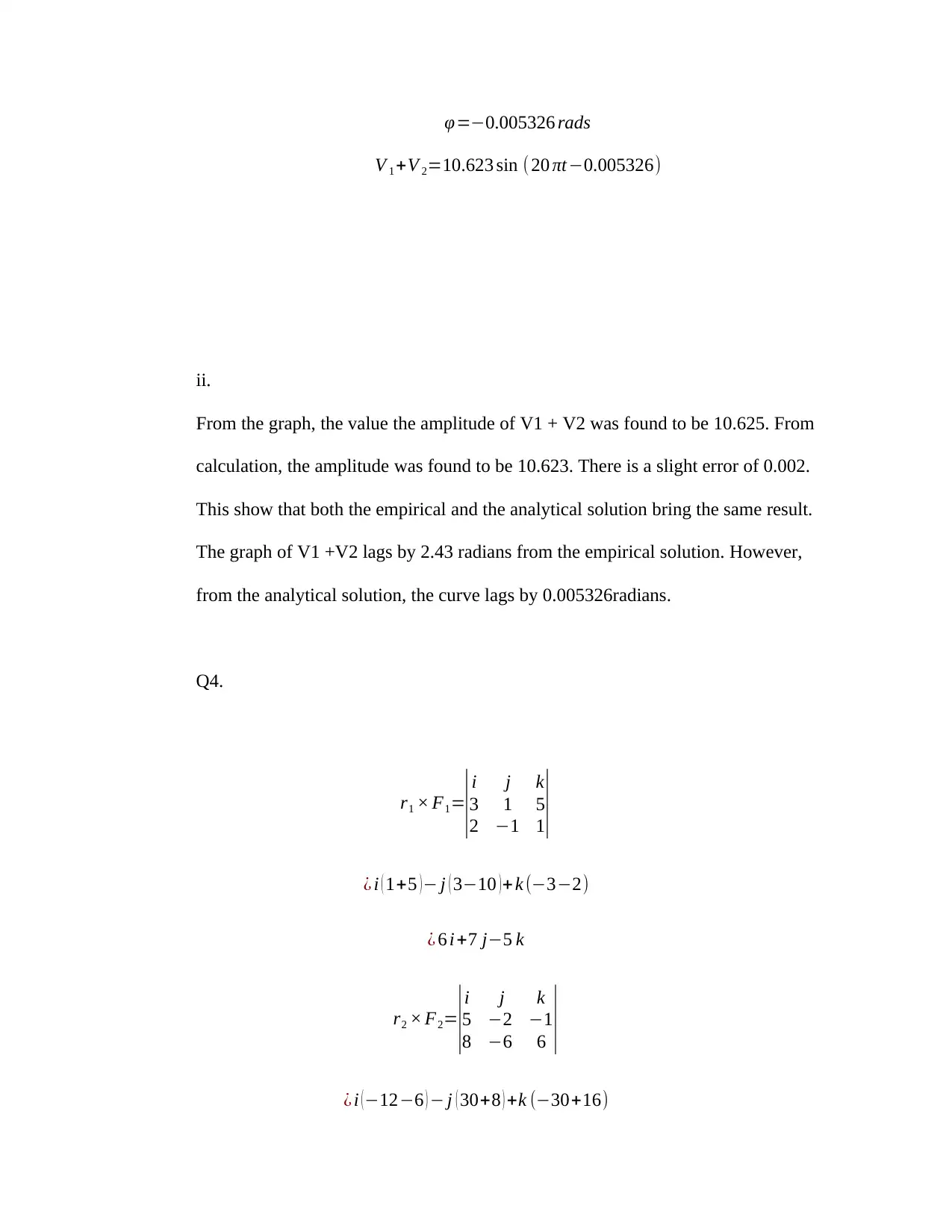
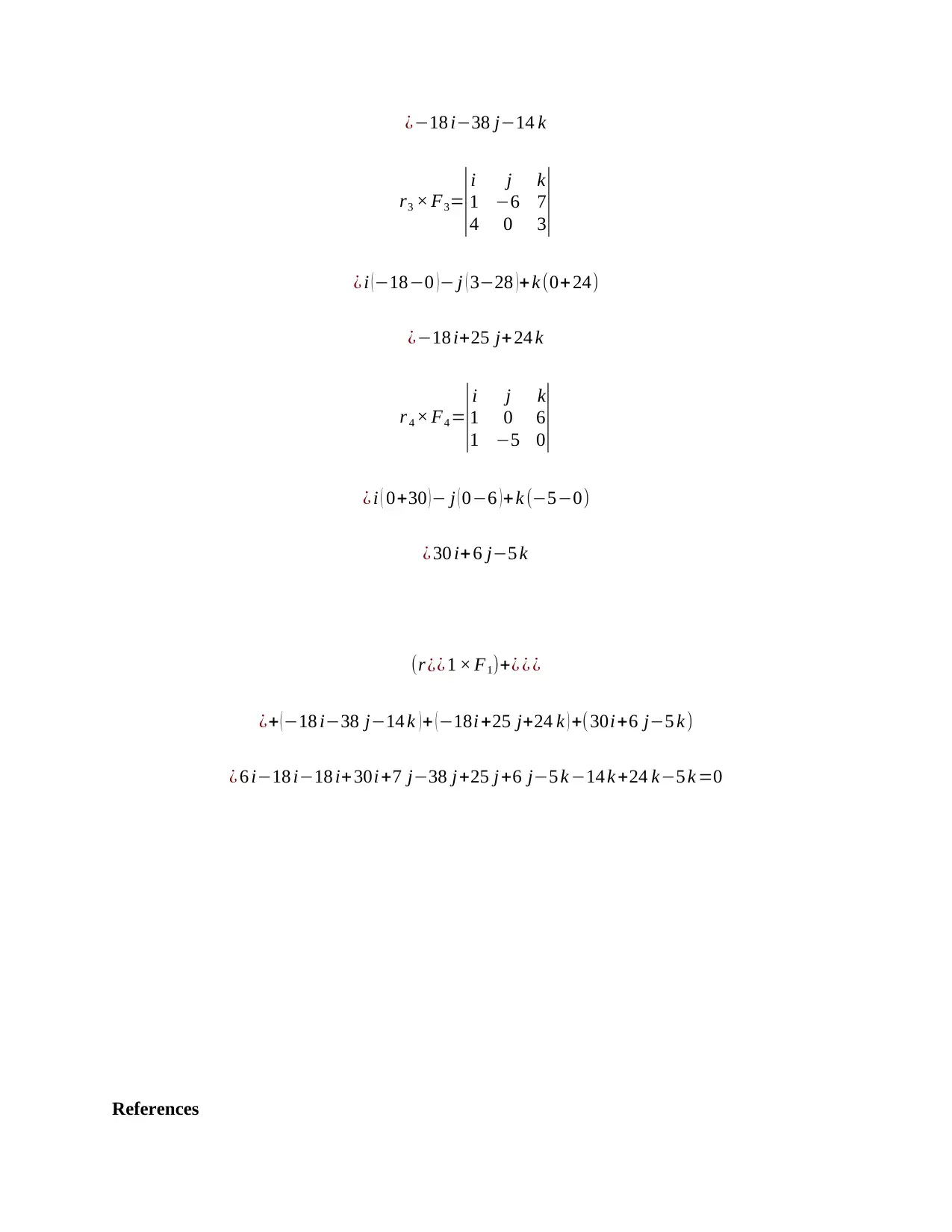







![[object Object]](/_next/static/media/star-bottom.7253800d.svg)